-
 Bitcoin
Bitcoin $117600
0.25% -
 Ethereum
Ethereum $4424
0.10% -
 XRP
XRP $3.101
0.50% -
 Tether USDt
Tether USDt $1.001
-0.01% -
 BNB
BNB $836.2
1.26% -
 Solana
Solana $188.8
2.11% -
 USDC
USDC $1.000
0.01% -
 Dogecoin
Dogecoin $0.2301
0.57% -
 TRON
TRON $0.3485
-1.00% -
 Cardano
Cardano $0.9209
-1.34% -
 Hyperliquid
Hyperliquid $46.72
-1.19% -
 Chainlink
Chainlink $22.62
4.84% -
 Stellar
Stellar $0.4275
-0.38% -
 Sui
Sui $3.761
1.91% -
 Bitcoin Cash
Bitcoin Cash $586.7
-0.25% -
 Ethena USDe
Ethena USDe $1.001
0.01% -
 Hedera
Hedera $0.2510
2.06% -
 Avalanche
Avalanche $24.21
2.22% -
 Litecoin
Litecoin $119.7
1.07% -
 Toncoin
Toncoin $3.450
1.06% -
 UNUS SED LEO
UNUS SED LEO $9.411
-0.93% -
 Shiba Inu
Shiba Inu $0.00001298
1.20% -
 Uniswap
Uniswap $10.98
3.25% -
 Polkadot
Polkadot $3.961
2.16% -
 Dai
Dai $1.000
0.00% -
 Bitget Token
Bitget Token $4.642
0.95% -
 Cronos
Cronos $0.1514
0.57% -
 Ethena
Ethena $0.7290
3.78% -
 Monero
Monero $254.1
7.69% -
 Pepe
Pepe $0.00001102
2.47%
How to switch networks in MetaMask? Will the gas fee change after switching?
Switching networks in MetaMask is easy: open the app, select a network from the dropdown, or add a custom one. Gas fees vary by network and congestion.
May 08, 2025 at 07:15 pm
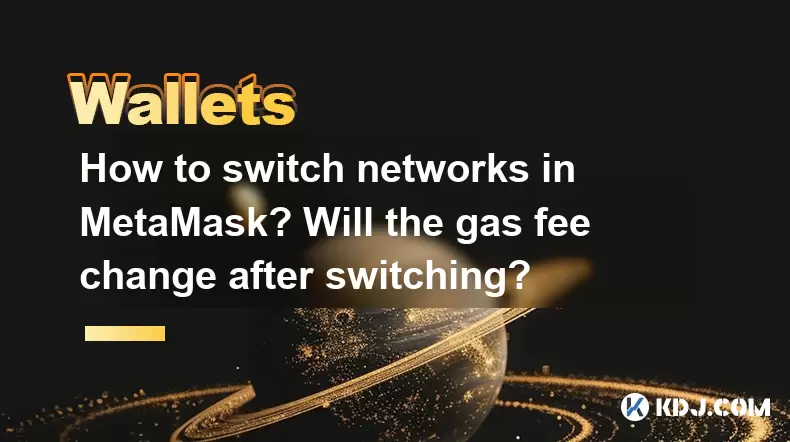
Switching networks in MetaMask is a straightforward process that allows you to interact with different blockchain networks. This capability is essential for users who wish to explore various decentralized applications (dApps) and tokens on different networks. In this guide, we will walk you through the steps to switch networks in MetaMask and discuss how gas fees might change after switching.
Understanding MetaMask Networks
MetaMask supports multiple blockchain networks, including Ethereum Mainnet, Testnets like Ropsten, Rinkeby, Goerli, and Kovan, and Layer 2 solutions such as Polygon and Optimism. Each network has its own set of rules, gas fees, and supported dApps. When you switch networks, you essentially change the blockchain environment you are interacting with.
Steps to Switch Networks in MetaMask
To switch networks in MetaMask, follow these steps:
- Open MetaMask: Launch the MetaMask extension in your browser or the MetaMask mobile app.
- Access Network Settings: Click on the network dropdown menu at the top of the MetaMask interface. On the mobile app, tap the network name at the top of the screen.
- Select a Network: From the list of available networks, select the one you want to switch to. If the network you want to use is not listed, you can add it manually.
- Add a Custom Network: If you need to add a custom network, click on "Add Network" or "Custom RPC". You will need to enter the following details:
- Network Name: Enter the name of the network.
- New RPC URL: Enter the RPC URL for the network.
- Chain ID: Enter the Chain ID for the network.
- Currency Symbol: Enter the symbol for the native currency of the network.
- Block Explorer URL: Enter the URL for the network's block explorer.
- Confirm the Switch: Once you have selected or added the network, MetaMask will switch to the new network. You will see the network name change at the top of the interface.
How Gas Fees Change After Switching Networks
Gas fees are the costs associated with executing transactions on a blockchain network. When you switch networks in MetaMask, the gas fees can change significantly. Here's how:
- Different Network, Different Fees: Each blockchain network has its own gas fee structure. For instance, Ethereum Mainnet typically has higher gas fees compared to testnets or Layer 2 solutions like Polygon.
- Network Congestion: Gas fees can also vary based on the congestion of the network. If the network you switch to is experiencing high demand, the gas fees might be higher.
- Type of Transaction: The type of transaction you are executing can also affect gas fees. Simple transfers might have lower fees compared to complex smart contract interactions.
- Native Currency: The native currency of the network you switch to will be used to pay for gas fees. For example, if you switch to the Polygon network, you will pay gas fees in MATIC instead of ETH.
Checking Gas Fees on Different Networks
To check the current gas fees on different networks, you can use the following methods:
- MetaMask Gas Fee Estimator: MetaMask provides an estimate of the current gas fees for the network you are connected to. You can see this when you initiate a transaction.
- Blockchain Explorers: Websites like Etherscan for Ethereum or Polygonscan for Polygon provide real-time data on gas fees.
- Third-Party Tools: Tools like GasNow or EthGasStation offer detailed insights into gas fees across different networks.
Managing Gas Fees After Switching Networks
After switching networks, you might need to adjust your approach to managing gas fees. Here are some tips:
- Monitor Gas Prices: Keep an eye on gas prices using the methods mentioned above. This will help you choose the best time to execute transactions.
- Use Gas Fee Optimizers: Some dApps and wallets offer features to optimize gas fees. For example, some platforms allow you to set a custom gas price or use a gas station to find the optimal fee.
- Consider Layer 2 Solutions: If you find gas fees on the Ethereum Mainnet too high, consider switching to a Layer 2 solution like Polygon or Optimism, which typically have lower fees.
- Batch Transactions: If possible, batch multiple transactions into one to save on gas fees. This is particularly useful for smart contract interactions.
Frequently Asked Questions
Q: Can I switch back to the previous network easily in MetaMask?
A: Yes, switching back to a previous network in MetaMask is as simple as selecting the desired network from the network dropdown menu. Your wallet will retain the list of networks you have used, making it easy to switch back and forth.
Q: Will my assets be visible on the new network after switching?
A: When you switch networks, you will only see the assets that are native to or supported by that network. For example, if you switch to the Polygon network, you will see your MATIC balance and any tokens supported on Polygon, but not your ETH balance from the Ethereum Mainnet.
Q: Do I need to create a new wallet for each network in MetaMask?
A: No, you do not need to create a new wallet for each network. Your MetaMask wallet can connect to multiple networks using the same seed phrase and private keys. When you switch networks, you are simply changing the blockchain environment your wallet interacts with.
Q: Can I transfer assets between different networks in MetaMask?
A: Direct transfers between different networks are not possible within MetaMask. To move assets between networks, you would need to use a bridge or a cross-chain solution specific to the networks you are using. For example, to move ETH from Ethereum Mainnet to Polygon, you would use the Polygon Bridge.
Disclaimer:info@kdj.com
The information provided is not trading advice. kdj.com does not assume any responsibility for any investments made based on the information provided in this article. Cryptocurrencies are highly volatile and it is highly recommended that you invest with caution after thorough research!
If you believe that the content used on this website infringes your copyright, please contact us immediately (info@kdj.com) and we will delete it promptly.
- Kazakhstan's Crypto Leap: Bitcoin ETF and Central Asia's Digital Finance Future
- 2025-08-13 12:45:19
- BlockDAG Presale Blazes Past $371M: Fundraising Frenzy Fuels Crypto Sensation
- 2025-08-13 13:05:21
- Meme Coins: Chasing the 2025 Surge – Which Will Moonshot?
- 2025-08-13 10:25:23
- Bitcoin's Wild Ride: Rally, Pullback, and What's Next
- 2025-08-13 10:25:23
- Bitcoin, Bitmax, and Institutional Demand: A New Era of Crypto Investment
- 2025-08-13 10:45:12
- Solana, ROAM, and Airdrops: What's the Buzz in 2025?
- 2025-08-13 11:35:13
Related knowledge
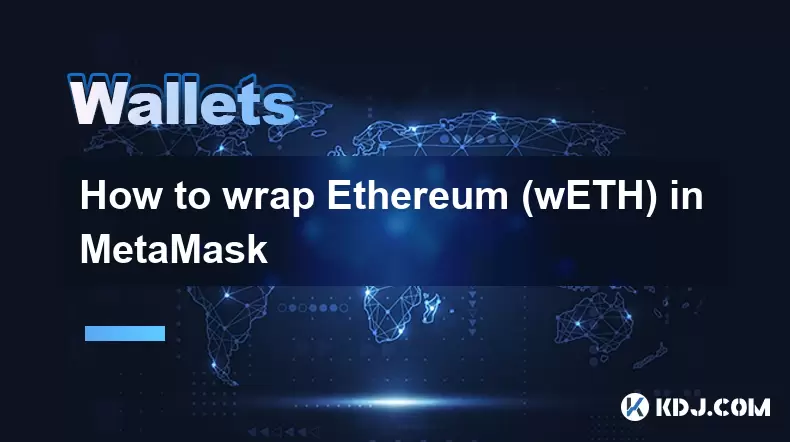
How to wrap Ethereum (wETH) in MetaMask
Aug 13,2025 at 11:36am
Understanding Wrapped Ethereum (wETH)Wrapped Ethereum (wETH) is a tokenized version of native Ethereum (ETH) that conforms to the ERC-20 standard, ena...
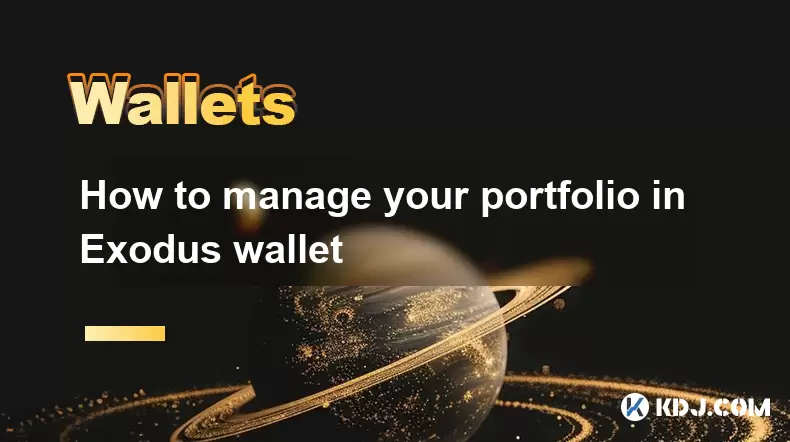
How to manage your portfolio in Exodus wallet
Aug 08,2025 at 10:07pm
Understanding the Exodus Wallet InterfaceThe Exodus wallet is a non-custodial cryptocurrency wallet that supports a wide range of digital assets. When...

How to manage your portfolio in Exodus wallet
Aug 13,2025 at 11:35am
Understanding the Exodus Wallet InterfaceThe Exodus wallet is a non-custodial cryptocurrency wallet that supports a wide range of digital assets. Upon...
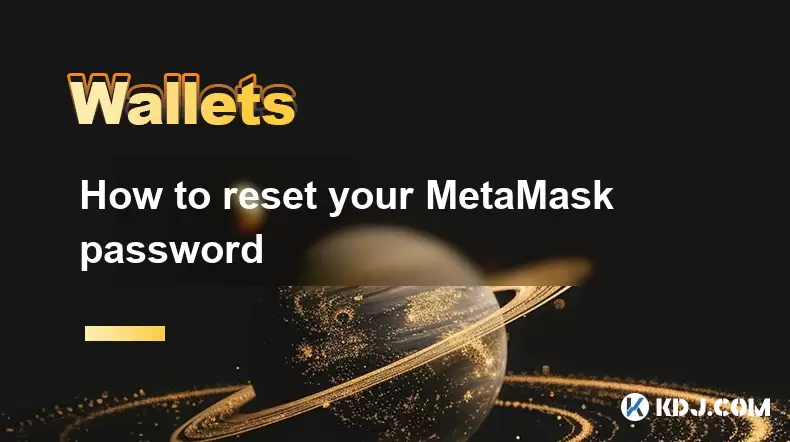
How to reset your MetaMask password
Aug 08,2025 at 01:28pm
Understanding the MetaMask Password Reset ProcessMany users confuse the MetaMask password with the seed phrase or private key, but they serve differen...
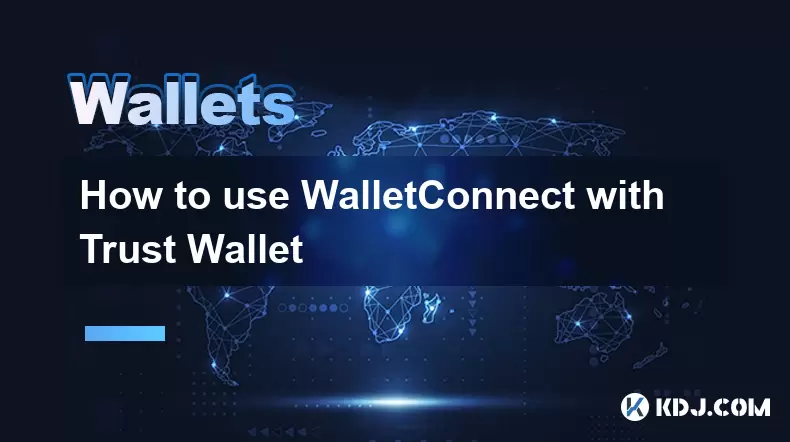
How to use WalletConnect with Trust Wallet
Aug 13,2025 at 01:07am
What Is WalletConnect and Why It Matters for Trust Wallet UsersWalletConnect is an open-source protocol that enables secure communication between dece...
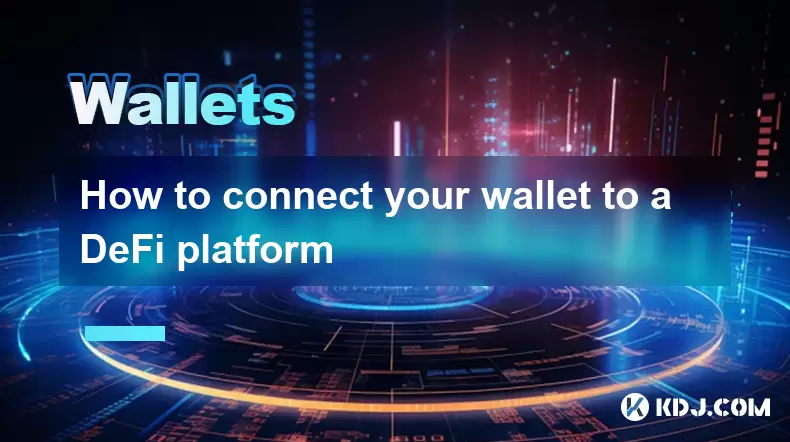
How to connect your wallet to a DeFi platform
Aug 13,2025 at 11:36am
Understanding Wallet Compatibility with DeFi PlatformsBefore connecting your wallet to any DeFi platform, it's essential to ensure your wallet is comp...

How to wrap Ethereum (wETH) in MetaMask
Aug 13,2025 at 11:36am
Understanding Wrapped Ethereum (wETH)Wrapped Ethereum (wETH) is a tokenized version of native Ethereum (ETH) that conforms to the ERC-20 standard, ena...

How to manage your portfolio in Exodus wallet
Aug 08,2025 at 10:07pm
Understanding the Exodus Wallet InterfaceThe Exodus wallet is a non-custodial cryptocurrency wallet that supports a wide range of digital assets. When...

How to manage your portfolio in Exodus wallet
Aug 13,2025 at 11:35am
Understanding the Exodus Wallet InterfaceThe Exodus wallet is a non-custodial cryptocurrency wallet that supports a wide range of digital assets. Upon...

How to reset your MetaMask password
Aug 08,2025 at 01:28pm
Understanding the MetaMask Password Reset ProcessMany users confuse the MetaMask password with the seed phrase or private key, but they serve differen...

How to use WalletConnect with Trust Wallet
Aug 13,2025 at 01:07am
What Is WalletConnect and Why It Matters for Trust Wallet UsersWalletConnect is an open-source protocol that enables secure communication between dece...

How to connect your wallet to a DeFi platform
Aug 13,2025 at 11:36am
Understanding Wallet Compatibility with DeFi PlatformsBefore connecting your wallet to any DeFi platform, it's essential to ensure your wallet is comp...
See all articles

























































































